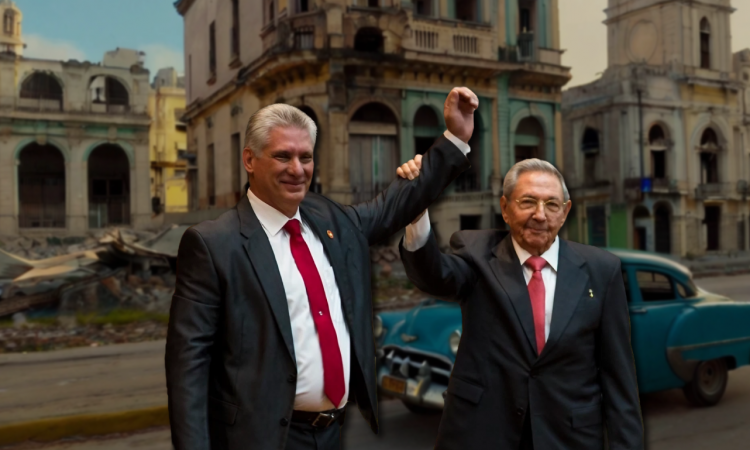On March 1, 2024, the gasoline price increased fivefold in Cuba as part of the austerity measures imposed by dictator Miguel Díaz-Canel. These are in place to purportedly address the wide-ranging economic and humanitarian crisis accentuated since 2020 by COVID-19 disruptions to supplies, tourism, and foreign aid.
The so-called austerity program, still being rolled out, entails the deepest reforms in the last three decades. However, it does zero to liberalize the domestic economy and will only paper over fiscal difficulties. So long as private-sector entrepreneurship is outlawed, poverty will remain and the fiscal challenges will return in short order.
Everyone can see the problem. Even the National Bureau of Statistics—despite its reputation for politicized data—has reported that Cuba ended 2023 with worrisome 31 percent annual inflation, a deficit of 15 percent of government spending, and a 2 percent GDP decline.
The new austerity program includes tax increases, a peso devaluation, and sharp price hikes on public utilities such as transportation and energy, on the back of lengthy blackouts. The program is also replacing universal subsidies with needs-tested provisions.
In 2021, the Cuban regime ended its dual-currency system, which included a dollar-pegged convertible peso and a free-floating Cuban peso. There was also a gradual reduction in across-the-board subsidies to address the regime’s escalating fiscal deficit. However, the deficit just continued to worsen.
Ya lo hemos dicho: nada, absolutamente nada de lo que hacemos es para afectar al pueblo. Nuestra principal tarea es la recuperación económica. Las medidas anunciadas ayer darán un salto necesario en la economía. Haremos más Revolución y más Socialismo. #EstaEsLaRevolución 🇨🇺
— Miguel Díaz-Canel Bermúdez (@DiazCanelB) December 21, 2023
More of the Same
Although the dictatorship’s austerity program this year is more aggressive than the one applied in 2021, it follows a similar script. In this case, the program includes:
- higher public-utility and gasoline prices (combined with price discrimination to favor individuals with demonstrated need);
- a variety of higher income, employment, social-security, municipal, and sales taxes on approved professional activities—including when working for foreign firms—in addition to higher tariffs on imports;
- reduced duties on some staple imports;
- a narrowed list of subsidized rations.
In contrast to the 2021 reforms, when the government raised the monthly minimum wage from 400 to 2,100 Cuban pesos, regime-imposed salaries will remain the same. As of mid-March 2024, the Cuban minimum wage equals $87 at the official exchange rate and $7 at the black-market rate.
According to the World Bank, people live in extreme poverty when they subsist on less than $2.15 per day. Subjects of the Cuban dictatorship are now in deprivation far beyond this threshold, being squeezed by fixed compensation amid inflation.
Dictator Díaz-Canel is correct when he states that the austerity program is far from being “neoliberal,” assuming that entails open trade, market liberalization, and respect for private property. He is 100 percent wrong, however, when he contends this socialist scheme will bring even a modicum of economic recovery. The dictatorship’s austerity program is a cure worse than the disease.
Another Not-so-Special Time
The island has been under a never-ending crisis since former dictator Fidel Castro seized power in 1959. For over 30 years, the Cuban Communist Party (CCP) remained afloat due to support from the Soviet Union. When its major ally fell in 1991, the CCP faced an unprecedented crash known as the “Special Period in the Time of Peace.”
In recent years, the island has struggled with the effects of a similar event: the collapse of the Venezuelan economy. Once an oil-funded power broker in Latin America, the Venezuela of Hugo Chávez and his Bolivarian Revolution was Cuba’s sugar daddy.
El hambre mató al miedo en Santiago de Cuba. Mucho valor #CubaPaLaCalle 🇨🇺💪🏻 pic.twitter.com/gsgEVYREgP
— David Ghitis (@ghitis) March 17, 2024
The consequences derived from the COVID-19 pandemic in 2020 and Hurricane Ian in 2022 limited already-scarce food staples, medicine, and energy. Moreover, the 2021 monetary reform accelerated inflation, reaching 400 percent in 2021. While $1 garnered 24 Cuban pesos in 2021, in March 2024 it garners 325 on the black (free) market.
The current crisis is so severe that the dictatorship has requested—for the first time in its history—humanitarian aid from the UN World Food Programme. Starvation is now a reality in Cuba, and the regime has given up hiding it.
Ringleaders of the CCP blame the so-called US blockade for the country’s economic disaster. This is actually a trade embargo imposed in 1962 after the regime stole properties and US businesses operating on the island. Beyond the trade embargo, which excludes necessities such as food and medicine, the regime imposes all manner of restrictions on what and how much people can bring to the island.
Despite the embargo, the United States is Cuba’s major supplier of food, medicine, and remittances. In 2022, exports from the United States to Cuba were worth $341 million, and remittances were over $2 billion. While the United States gives some respite, the regime’s central planning suffocates the Cuban economy.
No Future for Communist Cuba
Cuba cannot continue sweeping the dust under the carpet.
The Madrid-based Cuban Observer for Human Rights NGO has revealed that, from 2018 to 2023, the National Revolutionary Police killed at least 95 people and injured 287. Retaliation has been the only response from the dictatorship to citizens speaking out against their miserable conditions. The Impunity Observer reported in 2022 that many Cubans resort to prostitution just to survive.
To flee deprivation, Cubans seek countless, resourceful ways to leave the country and evade controls. In 2023, more than 60 athletes—who tend to enjoy better conditions than regular citizens—escaped their delegations during competitions abroad. Boxing champion Yoenlis Hernández, for instance, escaped during a flight connection in Panama.
US Customs and Border Protection has registered a record high 500,000 entries from Cuban citizens to the United States in 2022 and 2023. This is 5 percent of the entire island’s population, and it outweighs the Cuban diaspora of 300,000 between 1960 and 1963. We are witnessing a new diaspora, larger also than the Mariel Boatlift of 1980.
The sole path forward for Cuba to overcome deprivation is laissez-faire capitalism and liberal democracy. Some of the ex-Soviet states—such as Czechia, Lithuania, Latvia, and Estonia—have achieved this to at least some degree and integrated themselves into international trade. Czechia, for instance, passed substantive economic and political reforms during the Velvet Revolution. As a result, Czech inflation-adjusted GDP per capita grew from $2,900 in 1991 to $27,000 in 2022. That is a compound annual growth rate of 7.2 percent.
The late UK Prime Minister Margaret Thatcher said: “The problem with socialism is that you eventually run out of other people’s money.” The Cuban regime ran out of such money many years ago, and the Cuban people have either fled or suffered. The options now are either liberalization or deeper misery, and tyrants who choose the latter are skating on thin ice.
 Join us in our mission to foster positive relations between the United States and Latin America through independent journalism.
Join us in our mission to foster positive relations between the United States and Latin America through independent journalism.
As we improve our quality and deepen our coverage, we wish to make the Impunity Observer financially sustainable and reader-oriented. In return, we ask that you show your support in the form of subscriptions.
Non-subscribers can read up to six articles per month. Subscribe here.

